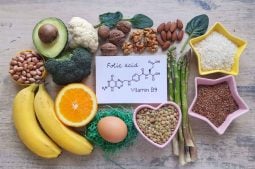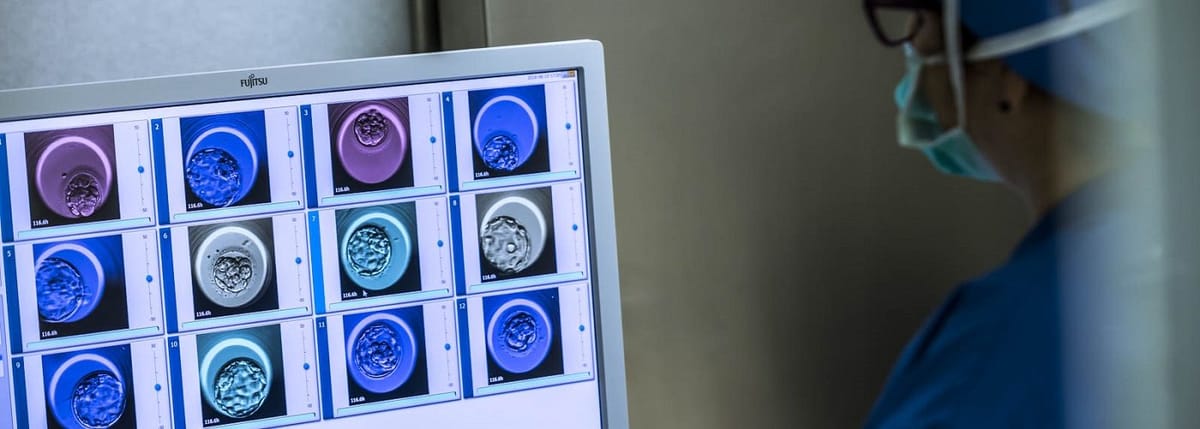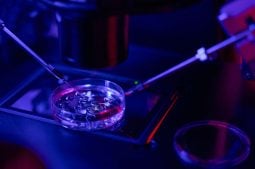
There are many aspects of frozen embryo transfer which are different to fresh transfer, as well as many similarities.
In this article, we aim to explain some of the differences between these two well-established assisted reproduction techniques. These include differences in the hormonal medication protocols involved and the choices available to the patient for the timing of their treatment, as well as the timing of the subsequent embryo transfer. We also explain how the decision is made about which cycle day the frozen embryo transfer is made, the symptoms you can expect following the procedure, and the pregnancy test after an IVF frozen embryo transfer.
What is the difference between fresh and frozen embryo transfer?
In vitro fertilisation (IVF) starts the same way for everyone. The patient is given hormonal medication to stimulate the ovaries to produce more than the normal single egg per menstrual cycle. When they are mature, these eggs are retrieved for fertilisation in the laboratory. They are then observed while they develop for five to six days to the blastocyst stage. This is where the choices can be made.
- If there is a medical need for various types of genetic testing, the tests are carried out after five days of development. After the biopsy, it can take 10 to 15 days for results to be available. All of the blastocysts are therefore frozen awaiting results. When these are available, a genetically healthy embryo is selected for transfer to the uterus. Although the time lapse is brief, this still qualifies as a frozen embryo transfer.
- For some patients, it is advisable to ‘rest’ between the ovarian stimulation/egg collection stage and the subsequent embryo transfer. This is to allow recovery from the hormonal stimulation and allow the lining of the uterus time to return to a more natural state where it can be more receptive to an embryo. During this time, the embryos are frozen for a period of one or more menstrual cycles.
- You may choose to freeze all of the embryos resulting from your IVF treatment because of your personal circumstances, to await a suitable time to start or extend your family. This means that you will have access to embryos that date from a younger age, no matter how long you choose to wait.
Why is the hormonal medication protocol different?
There is no one-size-fits-all protocol for IVF treatment for either type of transfer because the particular responses and needs of each patient are different. The exact treatment will be decided in our clinic by your medical team. However, in general terms, there are some significant differences in the type of medication required.
- For a normal IVF cycle, usually 10 to 15 days of hormonal treatment is needed to stimulate the ovaries. Once an ultrasound scan confirms that they have reached the optimum stage of development (follicle size being 16 mm), a dose of the hCG hormone is given. This induces maturation of the oocytes and 36 hours later, the eggs are collected. During the five to six days that they develop under observation, the patient’s uterus is prepared with further hormonal medication to ensure the right environment to support a pregnancy.
- Up to the point of egg retrieval, fertilisation and five to six days’ development, the medication is the same. However, if the medical plan is to freeze all of the embryos for any of the reasons outlined above, there is no need for the second stage of preparing the uterus lining to receive an embryo. It can therefore be left to rest and recover its normal and natural hormonal balance.
Which day of the cycle is the frozen embryo transfer?
A cycle of frozen embryo transfer begins at the end of your menstrual cycle, that is, after your period. Hormonal medication, usually a GnRH agonist, supresses your normal ovulation process. When your period arrives, and blood tests confirm that conditions are right, oestrogen supplementation is given for about two weeks to help create a healthy endometrium. Further monitoring follows, but overall, the monitoring regime is less than that required for a normal IVF cycle.
Progesterone support is added after around two weeks of oestrogen supplementation. The day of transfer depends on the day that the progesterone starts, and the number of days’ development of the embryo before it was frozen. For example, a five-day embryo transfer would be made on day six after the beginning of progesterone support. The choice of day is therefore a matter for you and your medical team to decide in advance.
What are the symptoms after a frozen embryo transfer?
The actual embryo transfer is a simple procedure and does not require any anaesthetic. Afterwards you can return home as normal. You may experience a slight vaginal discharge or bleeding and mild pain. These symptoms are common and do not indicate whether the procedure has been successful or not. The only way you can find out for sure is with a pregnancy test.
The pregnancy test after an IVF frozen embryo transfer
In the case of a fresh IVF cycle, the pregnancy test must always be done via a blood test. This is because the hormone that a home pregnancy test measures in your urine, human chorionic gonadotropin (hCG) could well be distorted by the dose of hCG administered 36 hours before egg collection. A frozen embryo transfer does not include this step and so a home test is less recommended.
However, your hormone balance can still be unsettled by the oestrogen and progesterone involved in a frozen embryo transfer. This is why we always recommend that you complete the process with a blood test to confirm pregnancy, usually 11 days after the transfer. We know the two-week wait is difficult but, with a success rate of 95% overall, including both fresh and frozen embryo transfer, there’s an excellent chance it will be worth it in the end!





Comments are closed here.